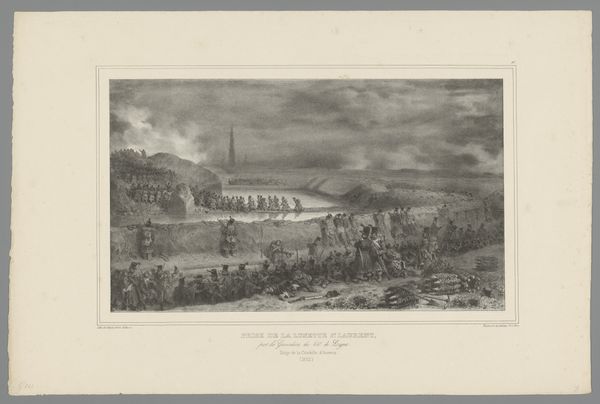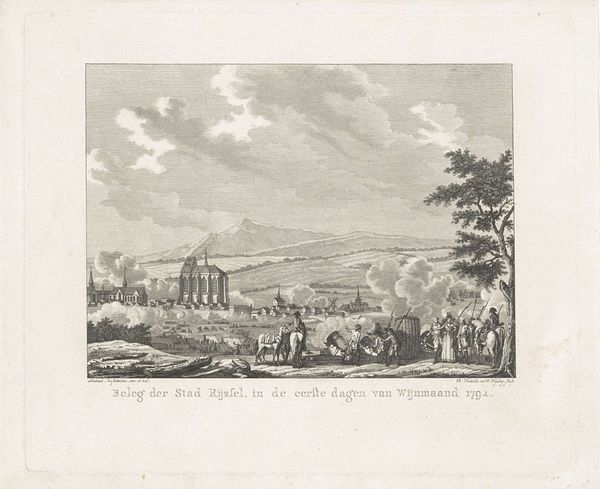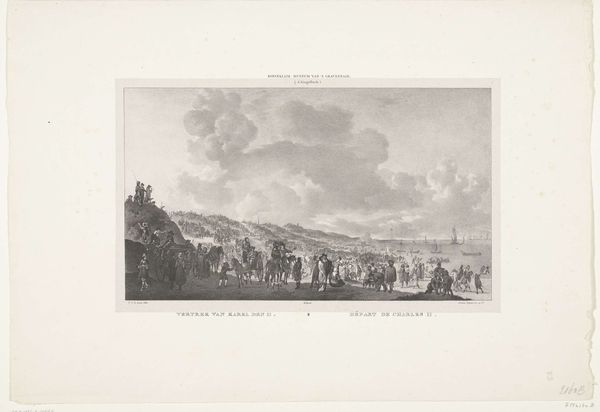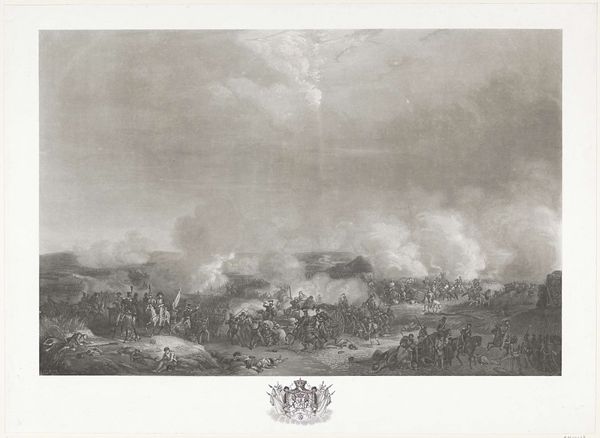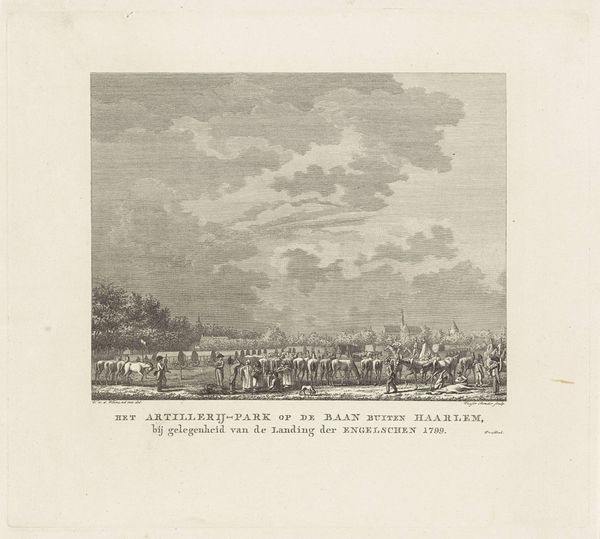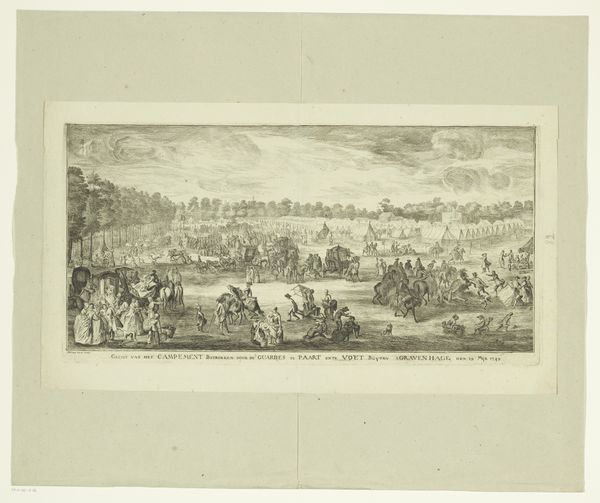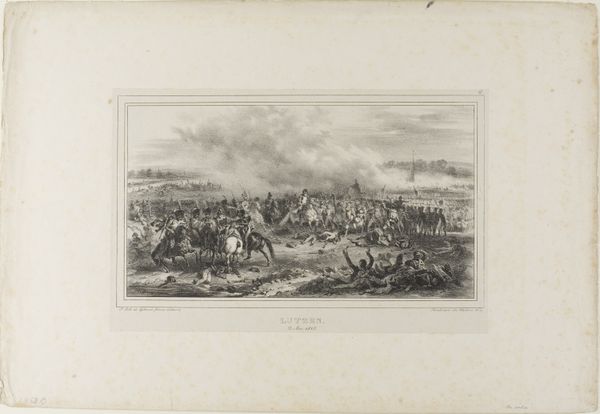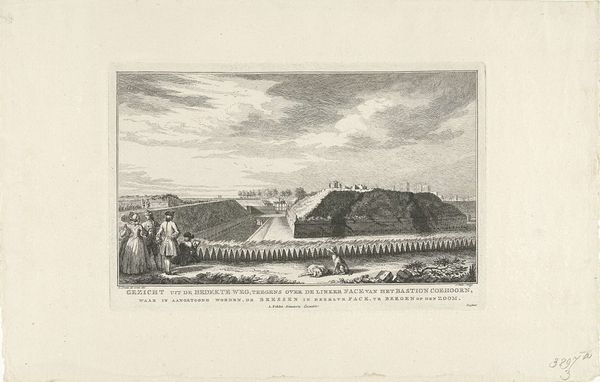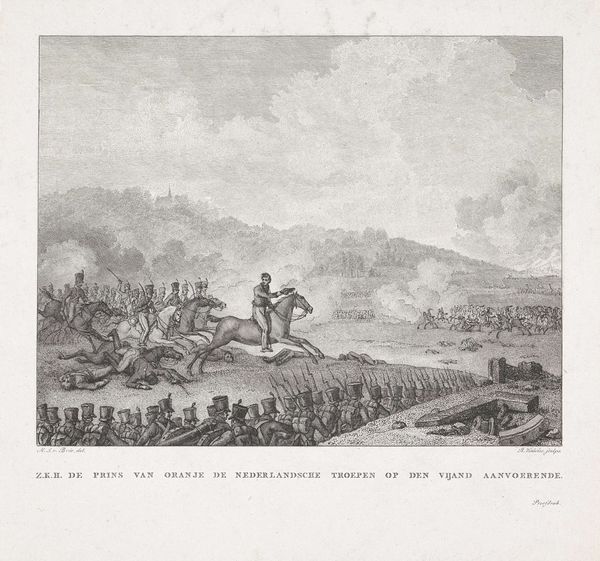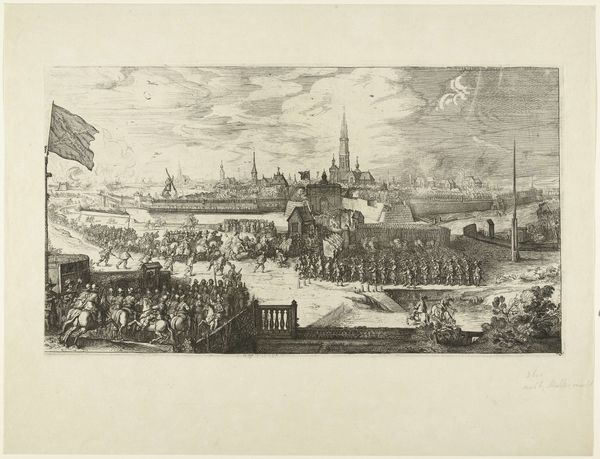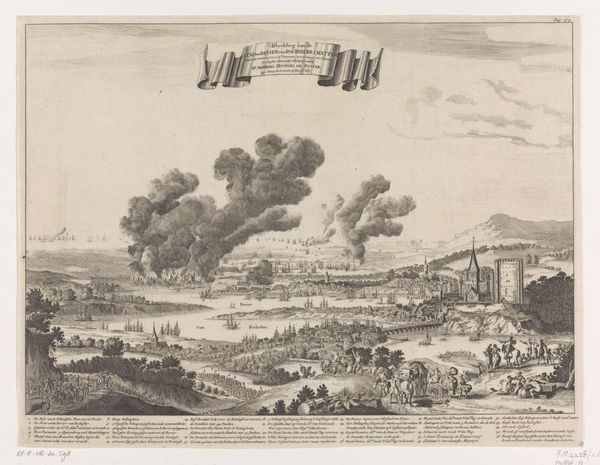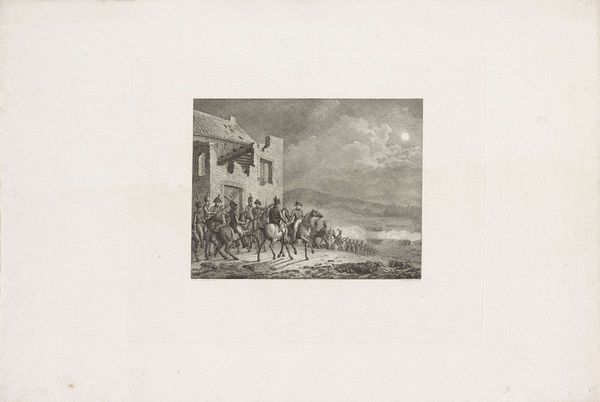
#
pencil drawn
#
photo of handprinted image
#
amateur sketch
#
light pencil work
#
pencil sketch
#
incomplete sketchy
#
pencil work
#
tonal art
#
mixed medium
#
watercolor
Dimensions: height 385 mm, width 462 mm
Copyright: Rijks Museum: Open Domain
Editor: This is "Schipbreuk van het stoomschip Willem I, 1837," by Joseph Vürtheim. It appears to be done in pencil and possibly watercolor. The scene is dramatic, with a ship caught in a storm. I'm struck by the figures on the shore, seemingly observing the wreck. What do you see in this piece, particularly regarding how it might speak to its time? Curator: The shipwreck itself becomes a potent symbol. Disasters like this captured the public imagination. Look how the turbulent sea almost mimics the swirling emotions, the collective anxiety of the viewers onshore. Editor: So, the image becomes less about the literal event and more about the emotional impact? Curator: Precisely. The ship, named "Willem I," likely held a degree of national pride. Its destruction then speaks to the vulnerability of progress and national identity. Consider also the clothing and stances of those observing; what societal roles might they represent? Are there symbolic indicators of class or status? Editor: I see different types of hats and postures...almost as if Vürtheim wanted to suggest that all sectors of society are affected. Is it common for disaster art to represent society more broadly? Curator: It's a recurring theme. Catastrophes can act as leveling events, reminders of shared humanity. Artists often use such moments to explore social structures, faith, and the power of nature, freezing time into shared history through symbol and visual language. What resonates with you personally in this composition? Editor: I suppose it’s that human desire to watch—to see what happens, even if it’s horrible. Maybe that hasn't changed much over time. Curator: Indeed, that very act of witnessing, the capturing of a fleeting tragedy, endows the event with a lasting cultural significance, preserved through art, continuing in us now.
Comments
No comments
Be the first to comment and join the conversation on the ultimate creative platform.
